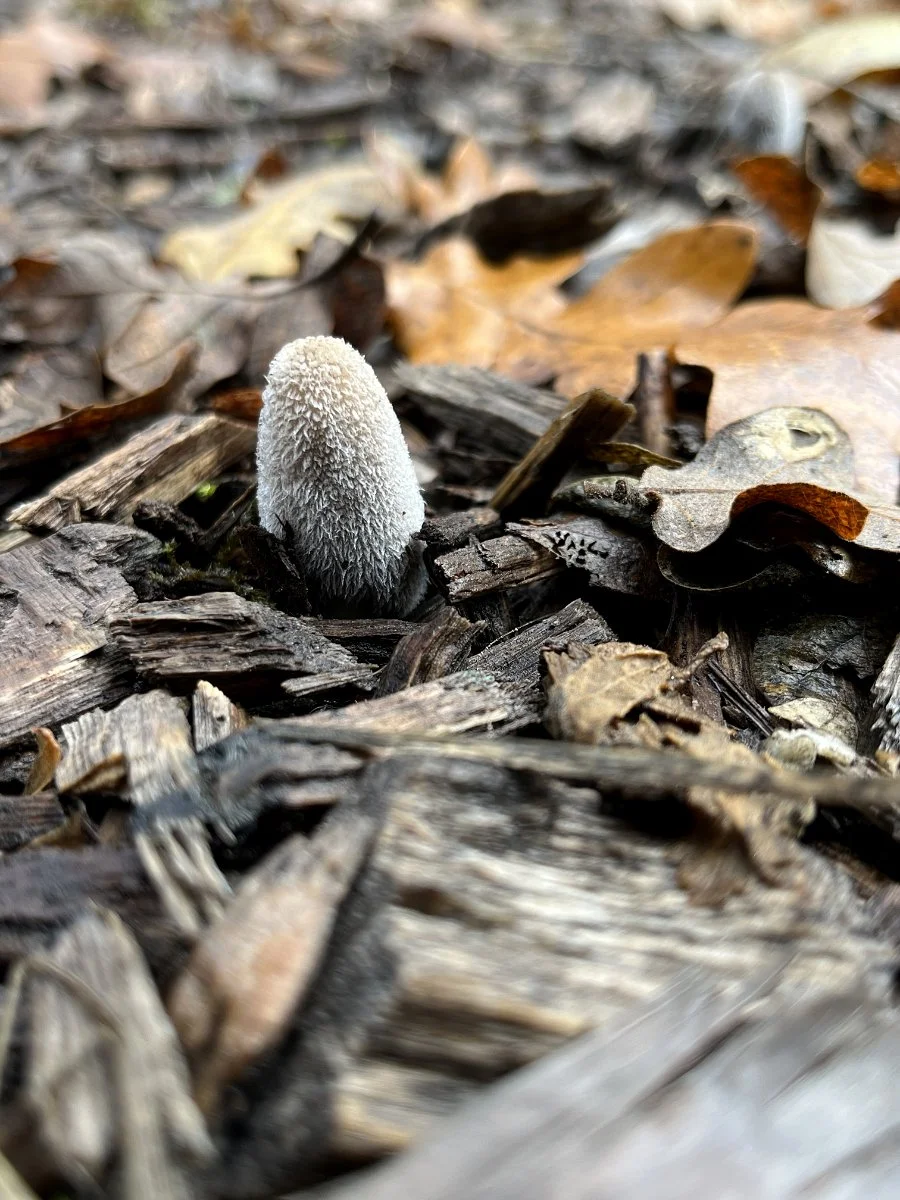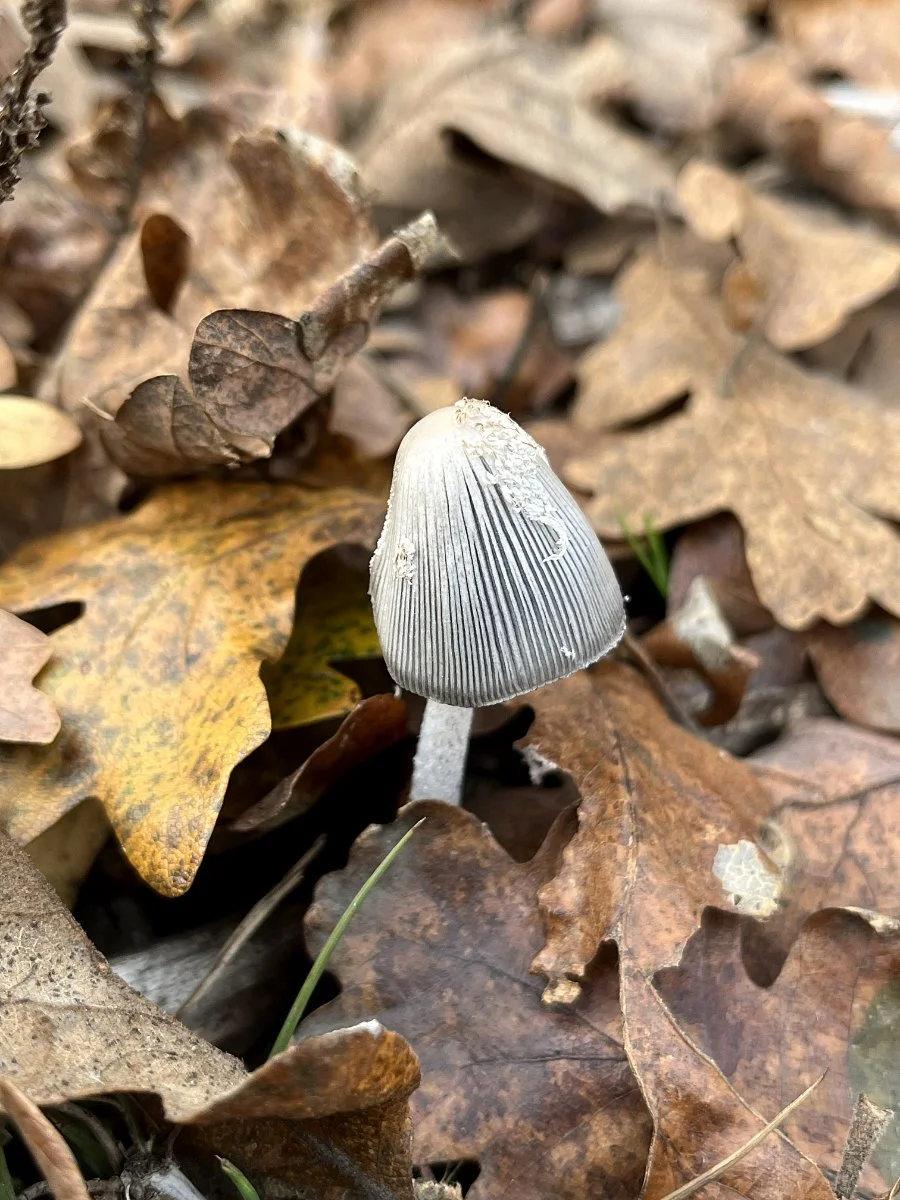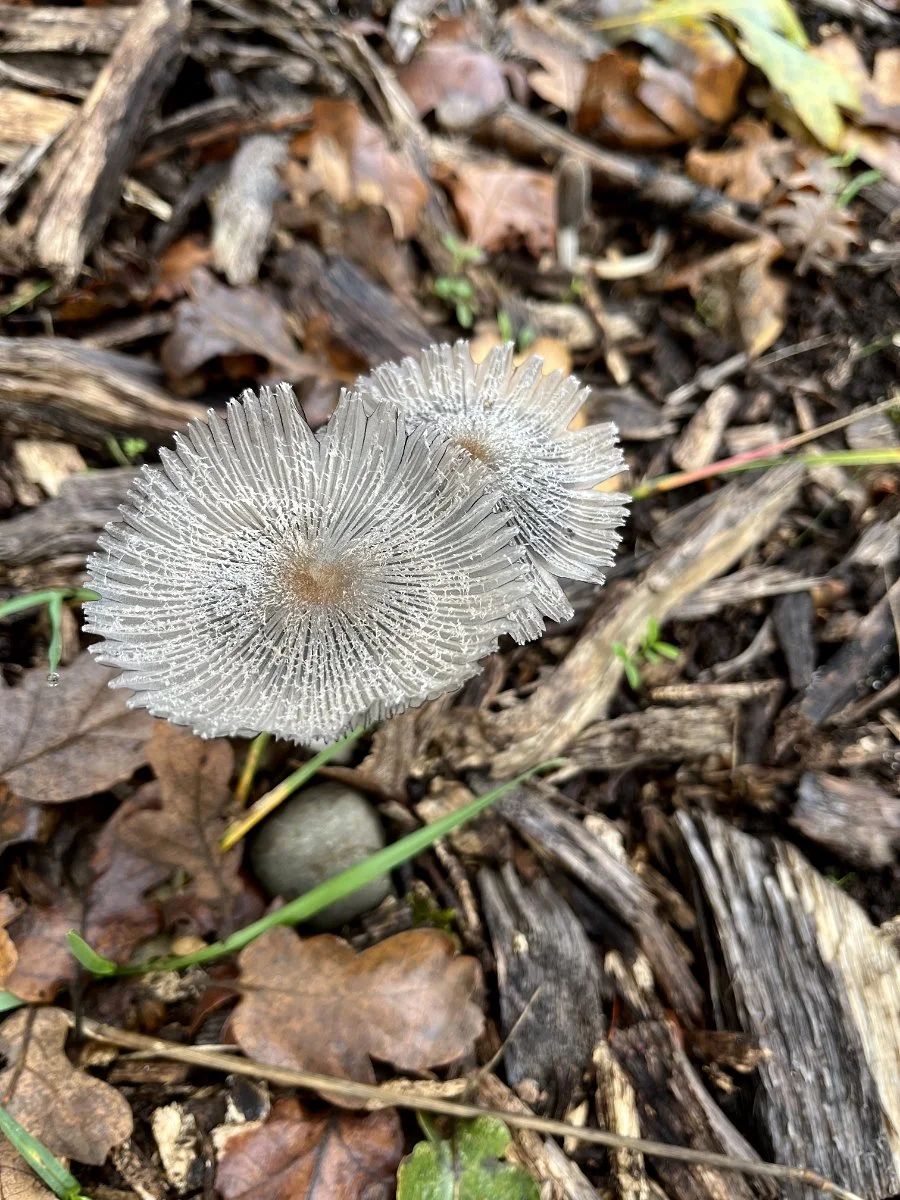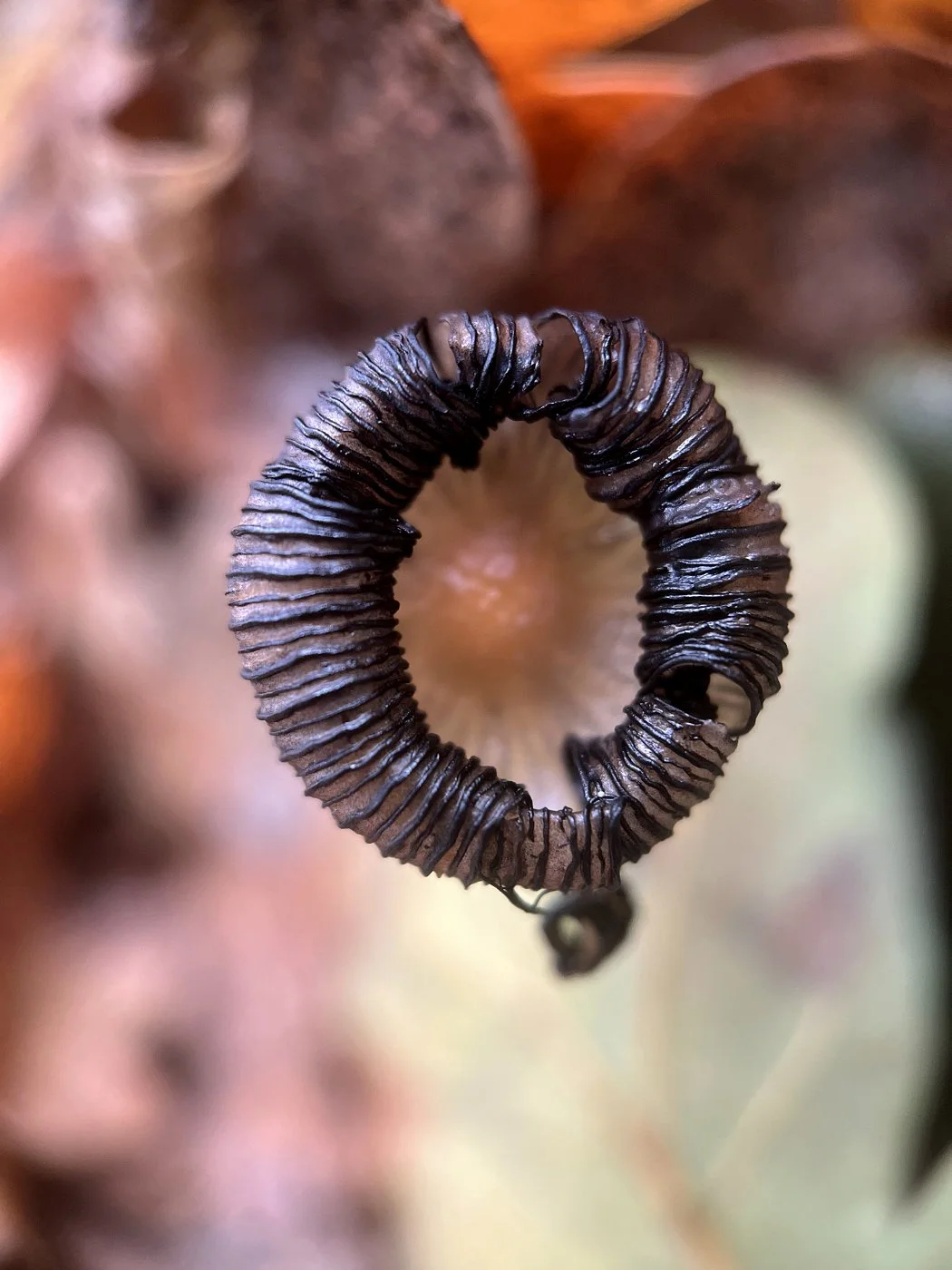There have been heaps of these mushrooms growing out of a blanket of wood chips that was scattered on the ground behind the White Oak Pavilion during the cleanup process after the ice storm a couple of years ago. I am really new at trying to identify mushrooms and many can only be reliably separated with microscopic examination. I think these are hare’s foot inky caps, Coprinopsis lagopus, because they are a common mushroom known for appearing in urban settings on wood chips and they fit the description and match the photos in the field guide. As it first emerges, it looks like a hare’s foot, but it quickly loses that fuzzy resemblance. I generally saw them last only for about a day or less as they quickly mature and turn into a black, ink-like mass.
In Mushrooms Demystified David Arora says this about inky cap mushrooms:
”MEMBERS of this genus are called inky caps because the gills and often the cap digest themselves at maturity, turning into an inky black fluid that drips to the ground. The autodigestion or deliquescing of the gills plus the black spore print are the main diagnostic features of Coprinus… The autodigestion process is a unique method of spore dispersal that should not be confused with the normal process of decay that occurs in most mushrooms. Rather than maturing at an even rate, the spores near the margin of the cap ripen first. Enzymes are simultaneously released which dissolve the surrounding tissue, causing the edge of the cap to spread out and curl back. This pulls the gills apart, enabling the spores to be discharged into the air…”
The edition of Mushrooms Demystified that I quoted is from 1986. Due to recent DNA studies, the genus of mushrooms Coprinus has been split into four genera: Coprinus, Parasola, Coprinopsis, and Coprinellus. At the time I guess it made sense to group of all these mushrooms together based on this characteristic process of spore dispersal as the mushrooms matured and turned into an inky substance.
Inky caps are saprotrophs which are organisms that derive nutrients by decomposing dead or decaying organic matter. They are essential for a healthy ecosystem in recycling nutrients back into the soil for other organisms to use.
I loved seeing all of the beautiful forms that this mushroom underwent as it quickly grew and matured. Check out all of the photos I took below over a couple weeks of returning to this spot over and over.
Resources
Arora, David. Mushrooms Demystified: A Comprehensive Guide to the Fleshy Fungi. Second edition, Ten Speed Press, 1986. K10plus ISBN.
Coprinoid Mushrooms: The Inky Caps (MushroomExpert.Com). https://www.mushroomexpert.com/coprinoid.html. Accessed 19 Nov. 2025.
Trudell, Steve, et al. Mushrooms of the Pacific Northwest. Timber Press, 2009. Timber Press Field Guide. Open WorldCat.

















